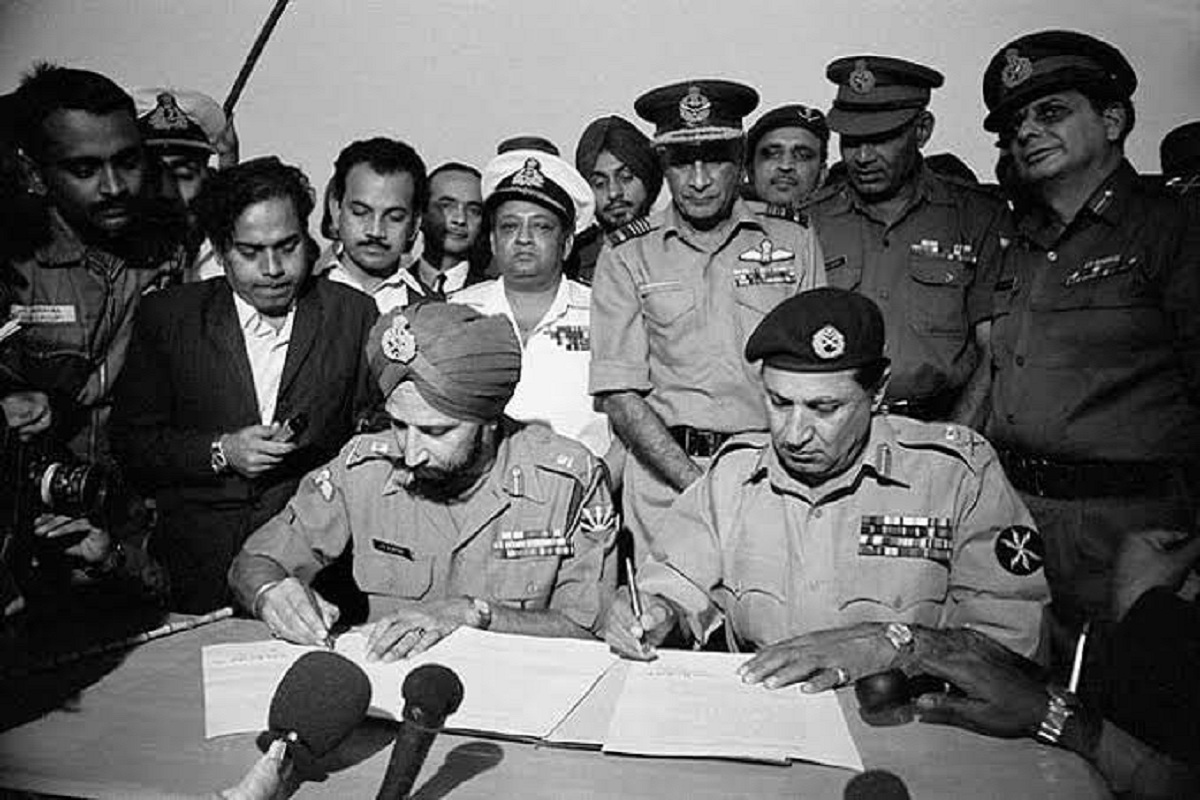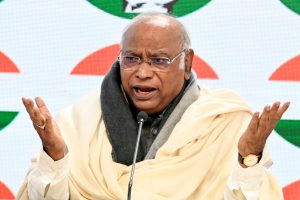The date 16 December every year heralds the celebration of the resounding Indian victory over Pakistan in the Indo-Pak War of 1971. 16 December 2020, however, portents the commencement of the Golden Anniversary – Swarnim Vijay Varsh – of the most significant geopolitical event in the history of the subcontinent since its partition in 1947 – the creation of the State of Bangladesh.
Here, the Indian Armed Forces and the Mukti Bahini together overwhelmed the Pakistani forces, leading to the humiliating surrender of Gen AAK Niazi with over 93,000 soldiers at Dhaka in 1971.
On a more solemn note, whilst celebrating the victories, the world must not forget the period of nine months of systematic and directed massacre and rape of nearly three million Bengalis- a gruesome genocide of unimaginable proportions – by the Pakistan Army.
The 1971 war, often referred to as the ‘Just War’, was undoubtedly the crowning glory of the Indian Armed Forces, acting jointly across theatres and dimensions. The span of the advance of the forces and the speed of the operations were of a magnitude and complexity not seen since the Second World War. In the Eastern Theatre, the Battle of Garibpur and the concurrent Battle of Boyra in the air above, in end Nov 1971, set the tone for the operations to follow, post the formal declaration of hostilities on 3 December 1971.
The Indian Army swiftly moved across riverine terrain, advancing towards Dhaka with the Indian Air Force (IAF) dominating the skies over what was then East Pakistan. On the Western front, the IAF decimated Pakistani armoured forces at Longewala and at Chhamb. With air superiority maintained over the theatre, the Indian Army captured large swathes of territory in the Pakistani provinces of Punjab and Sindh.
Indian forces delivered Effect-Based-Operations (decades before the term was coined). To illustrate: the Para-drop at Tangail (allowed the advancing Indians the ability to side-step Pak defences and take the lightly defended Manikganj-Dacca Road to Dacca); the IAF raid on Government House in Dhaka, on 14 December, led the Governor of East Pakistan, Mr Malik, to resign and flee to the neutral zone established by the Red Cross.
The 1971 war, above all, signalled the coming-of-age of the Indian Navy. In 1965, operational directives had constrained the service from operating North of Porbandar. Having understood the gravity of the situation in East Pakistan, the Indian Navy had planned seamless operations across the entire maritime theatre.
This included the deployment of the INS Vikrant Carrier Battle Group (CBG) to the Bay of Bengal. Planners had also formulated the ingenious use of the Osa-class missile vessels which struck Karachi harbour night of 4 December, (Op Trident) starting the biggest bonfire in the Arabian Sea. The scale of devastation caused by the missile boats was unexpected, while the Indian Navy suffered no losses.
In addition to the damage to the fuel tanks at Karachi, the Pakistan Navy lost the destroyer Khaibar, a merchant ship carrying ammunition (Venus Challenger) and the minesweeper Muhafiz. The destroyer Shah Jahan was also fatally damaged. This audacious attack was followed by another on 8 December (Op Python), with similar effect. The fuel storage tanks in Karachi kept burning for more than a week and the entire Pakistan Navy withdrew to Karachi harbour and carried out de-ammunitioning after the attack on 8 December.
The impact of these attacks was assessed by the CIA, in its brief to the then US President Nixon, which reveals that these attacks had forced a blockade off the coast of Karachi, making logistics supply untenable. Thus, the Indian Navy had established sea control off the western front within five days of commencement of hostilities.
The Indian Navy, fighting simultaneously on two-fronts, had also established sea-control over the Bay of Bengal. The Vikrant CBG struck the port cities of Cox’s Bazaar and Chittagong with its fighters on 5/6 December. The fighters also destroyed Pakistani merchantmen and infrastructure at Khulna and Mongla.
Anti-submarine operations off Visakhapatnam led to the sinking of the PN Submarine Ghazi off Vishakhapatnam, thereby eliminating the submarine threat on the eastern seaboard. In addition to these actions, the Navy also launched covert operations deep into East Pakistan, destroying targets in support of the overall operations plan.
The exploits of the Indian Navy during the 1971 India-Pakistan War are ingrained not only in the collective memory of India, Pakistan and Bangladesh, but also the world at large. The total sea control established across the maritime theatre and the devastation caused to the opposing forces was, considered hitherto implausible, and certainly had far-reaching effects on the psyche of the PN.
At the surrender ceremony at Dhaka, the Indian Armed Forces had achieved the Politico-Military Aim – restoring balance and harmony in the sub-continent and the consequent liberation of Bangladesh. As we start the Golden Anniversary – Swarnim Vijay Varsh – to commemorate this epic war, it is time to remember and honour the extra-ordinary military leadership of that era.
(The contents of this article are the personal views of the author and do not represent the official position of the Indian Navy or the Government of India)
Commodore Rahul Vilas Gokhale is a serving Indian Naval Officer presently posted at Visakhapatnam and has a keen interest in military history and International Relations.










